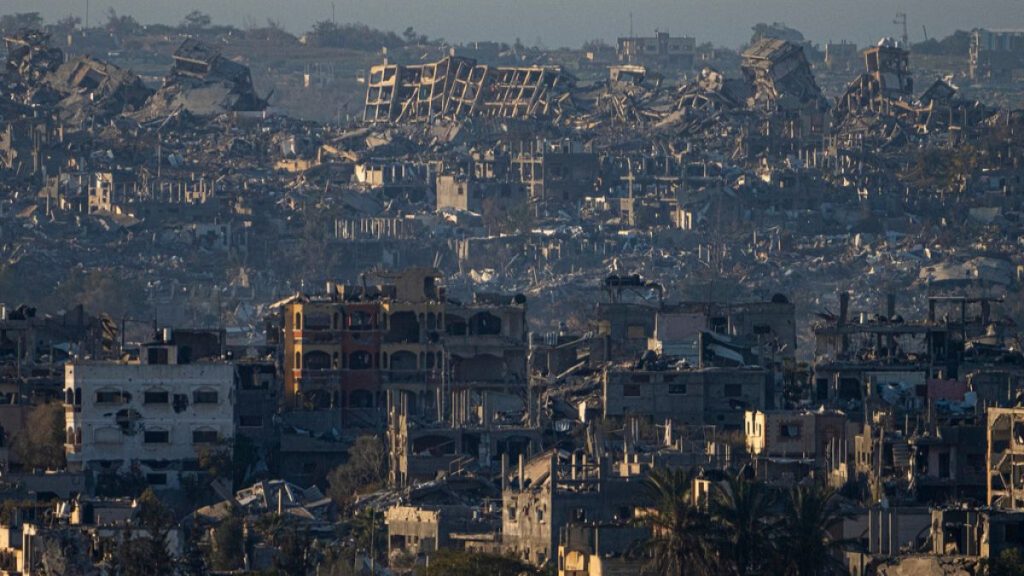A potential landmark ceasefire agreement between Israel and Hamas, aimed at halting the 15-month Gaza war, has been tentatively reached, according to multiple sources including US officials, Hamas representatives, and Qatari mediators. This complex deal involves a phased approach, beginning with a six-week pause in hostilities, the release of approximately 33 Israeli hostages held by Hamas since October 7th, the return of some displaced Palestinians to their homes, and the release of around 1,000 Palestinian prisoners held in Israel. While celebrations erupted among hostage families in Tel Aviv, Israeli Prime Minister Benjamin Netanyahu’s office cautiously stated that final details were still being ironed out, hinting at potential internal political hurdles. A vote on the deal by the Israeli cabinet is scheduled, with expectations that it will pass despite opposition from hardliners like National Security Minister Itamar Ben-Gvir, who has threatened resignation.
The tentative agreement represents a significant step towards de-escalating the devastating conflict in Gaza, which has claimed thousands of lives, fueled a parallel conflict in Lebanon, and destabilized the broader Middle East. The ceasefire’s phased structure aims to create a window for further negotiations between Israel and Hamas towards a more enduring peace. The initial six-week period will provide a crucial testing ground for the viability of the agreement and the willingness of both sides to engage in constructive dialogue. The release of hostages and prisoners, a highly sensitive issue for both sides, represents a critical confidence-building measure, intended to foster a more conducive environment for future talks.
The road to this potential ceasefire has been fraught with challenges and setbacks. Negotiations, often mediated by Qatar, the US, and Egypt, have been delicate and repeatedly close to collapse. Just hours before the announcement, reports emerged of a last-minute snag related to security arrangements along the Philadelphi Corridor, a sensitive border strip between Gaza and Egypt. Israel alleged Hamas attempted to alter a previously agreed-upon understanding, while Qatari officials claimed the issue was ultimately resolved. These recurring obstacles underscore the fragility of the truce and the deep-seated mistrust between the two sides.
The proposed agreement draws heavily upon a framework presented by US President Joe Biden in May. However, the looming inauguration of President-elect Donald Trump, who has claimed credit for the potential deal, may have added pressure on the parties to reach an agreement. Trump’s intervention, while its actual impact is debatable, highlights the complex geopolitical backdrop against which these negotiations unfolded. The urgency to secure a ceasefire before the transition of power in Washington might have played a role in pushing the parties towards a compromise.
The potential ceasefire carries significant implications for the Middle East. A successful implementation could signal a turning point in the protracted Israeli-Palestinian conflict, offering a glimmer of hope for a more peaceful future. It could also pave the way for improved regional stability, as the Gaza conflict has ramifications beyond the immediate region. Conversely, a failure of the ceasefire could lead to a renewed escalation of violence, further entrenching the cycle of conflict and exacerbating the humanitarian crisis in Gaza.
The success of the ceasefire hinges on the sustained commitment of both Israel and Hamas to upholding its terms and engaging in good-faith negotiations during the six-week pause. The international community, particularly the mediating countries, will play a crucial role in monitoring the implementation of the agreement and facilitating dialogue between the two sides. The challenges ahead are formidable, but the potential rewards of a lasting peace are immense. The coming weeks will be critical in determining whether this tentative ceasefire can translate into a meaningful step towards resolving the enduring conflict.

